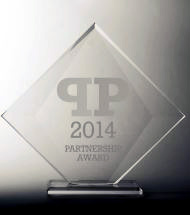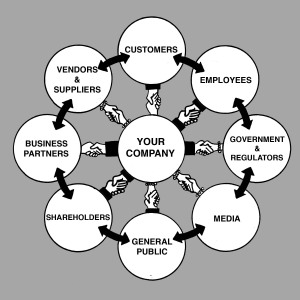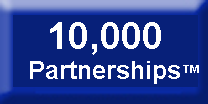Once in a while you are privileged to be involved in event that is both meaningful and inspirational. Such was the unique Partnership Prize award ceremony on November 21, held at the Marin Country Club in Novato, California. For many years I have dreamed of holding this program, and in partnership with NorthBay biz magazine, we unveiled the first Partnership Prize to room packed full of senior executives from the nonprofit, for-profit, education and government sectors in Northern California.
I created the Partnership Prize to recognize and reward exemplary cross-sector and intra-sector partnerships focused on the greater good. And importantly, to have this competition, and especially the winning partnerships, stimulate new partnerships and provide excellent role models for other organizations to realize the economic and social impact that can come through well-designed, well-executed cross-sector and intra-sector partnerships.
A few quotes we received following the event:
“The announcements of the spectacular (no other word) organizations, companies, government, educational partnerships has me hopeful for our country and our citizens. Today was inspirational in so many facets.” Sherri Lewis Wood, Founder, One Warm Coat
“Congratulations and a huge bouquet of thanks to Bruce and NorthBay Biz, for the incredible Partnership Awards meeting and awards ceremony. I felt so privileged to be in the same room with so many amazing people whose business and social partnerships were represented. Congratulations to all the winners.” Susan L. Miller, Sponsor Development Manager, Kid Scoop News
“It was not only amazing to hear what had been accomplished and is being accomplished, but it was also moving and inspirational.” Gerri Alaniz, Alaniz Marketing
The inaugural Partnership Prize presented awards in eight categories of cross-sector partnerships (partnerships between nonprofit, for-profit, education or government sectors) and intra-sector partnerships (nonprofits working with nonprofits.)
The 2014 Partnership Prize winners are:
Cross-sector partnership with more than 50 employees:
Napa Valley Vine Trail Coalition
Family Justice Center Sonoma County
Cross-sector partnership with less than 50 employees:
Kid Scoop News and Sonoma Raceway
Bellam Self-Storage and the San Rafael Clean Campaign
Grand prize for the most exemplary cross-sector partnership:
SchoolsRule Marin
Nonprofit with nonprofit partnership:
Warm Wishes and MarinLink
The Gasser Foundation and Sustainable Napa County
Grand Prize for the most exemplary nonprofit with nonprofit partnership:
Homeward Bound and Whistlestop
The 2014 Partnership Prize called for nominations from Marin, Napa and Sonoma counties in Northern California. The competition was both fierce and exceptional. I and all involved were overwhelmed by the caliber of the nominated partnerships and the extraordinary good being done in our communities.
Congratulations to our winners! And let’s keep this warm spirit of partnership alive and well into 2015 as we work together for the greater good.




 Posted by Bruce Burtch
Posted by Bruce Burtch 








